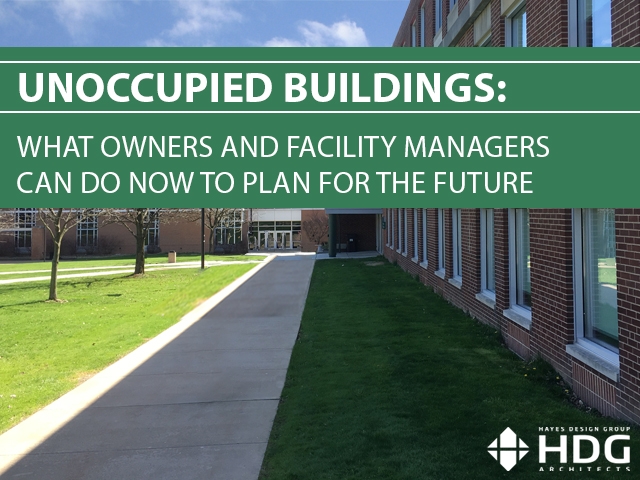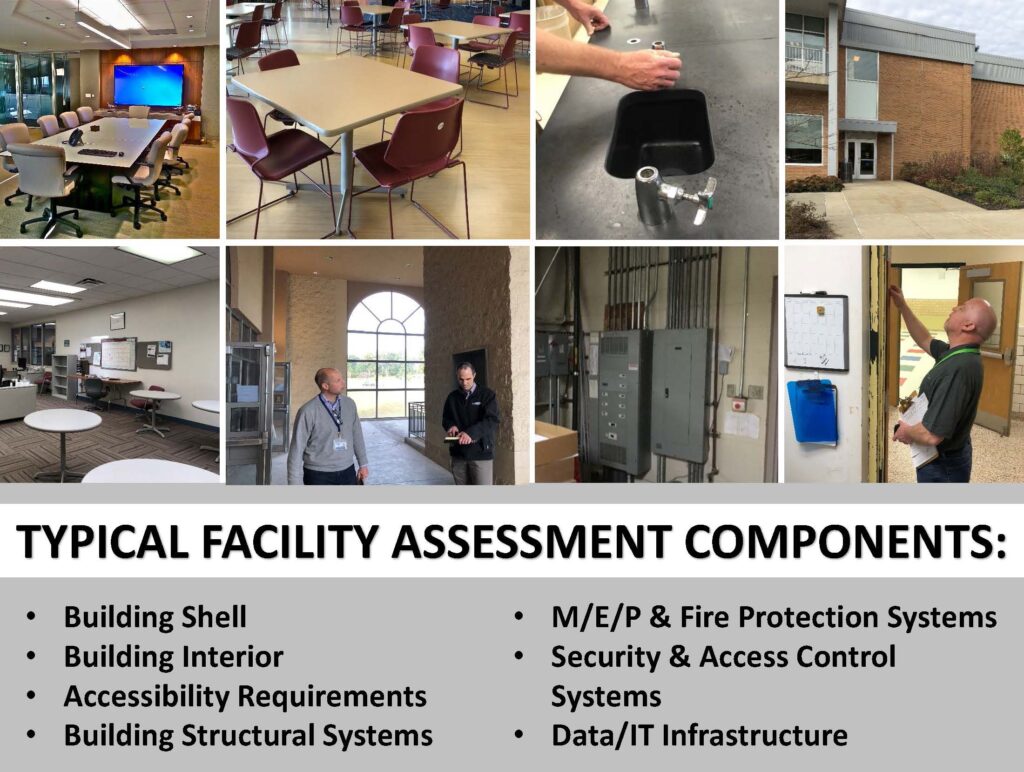
Unoccupied Buildings: What Owners and Facility Managers Can Do Now to Plan for the Future
August 31, 2020
Many facilities continue to sit completely or partially vacant as a direct result of the on-going COVID-19 pandemic. These facilities include commercial buildings and offices, schools, colleges, entertainment venues and sporting facilities, and many others. During this time, business continuity includes protecting your assets, which may include facilities that continue to be empty or at least partially unoccupied. Conducting a Facility Assessment is something an Owner or Facility Manager can do now to help address future issues before they become maintenance emergencies, and are particularly ideal to conduct in unoccupied or underoccupied buildings.
As architects and engineers, we typically coordinate with clients to find the best times during the year in order to complete a Facility Assessment when facilities may be vacant or less occupied than normal. For schools and colleges, these often include holidays or breaks from instruction throughout the year, most notably summer break which allows for unrestricted assessment of unoccupied buildings, but this can also include a day once a week when facilities are empty. However, with many types of buildings vacant for different or longer periods than normal, architects and engineers can assist facilities managers in conducting these assessments in an easier and in quicker timeframes than typical. And while keeping up with facility maintenance under normal circumstances can be tricky, in unoccupied buildings, unplanned emergencies may become even more difficult and costly to fix, and put additional strain on already limited staffing capabilities.
A Facility Assessment should be used as a tool to pre-empt future repairs by assessing issues and creating and prioritizing maintenance plans. An assessment of this kind is typically also completed at the beginning of almost every new or renovation project, as owners often want to know what the existing condition of facilities are before determining the feasibility of launching full-blown projects.
 Typical goals of a Facility Assessment are to identify the following:
Typical goals of a Facility Assessment are to identify the following:
- Routine and/or deferred maintenance
- Current or future deficiencies
- Effective age of major building systems and remaining useful life
- Compatibility with new systems
- Code compliance
- Prioritized list of repairs
- Cost and feasibility of necessary improvements / capital projects
Typical building components assessed as part of a Facility Assessment include:
- Building Shell (Roof, Exterior Walls, Windows, Entrance Systems and other systems)
- Building Interior (Floors, Walls, Ceilings, Doors/Hardware, Built-In Cabinetry, etc.)
- Accessibility Requirements (Stairs, Ramps, Elevators, Required Clearances, etc.)
- Site Development (Pavement, Drainage, Utilities, Landscaping)
- Building Structural Systems
- Mechanical, Electrical, Plumbing and Fire Protection Systems
- Security and Access Control Systems
- Data /IT Infrastructure
If your company or organization could benefit from a Facility Assessment, reach out to us at architects@hayesdesign.com and we can put together a dedicated team of professional consultants, including both architects and engineers, to assist you in assessing your facilities and start planning for the future, before any unexpected issues arise.
Examples of projects our team has completed in recent years that have included a Facility Assessment:
- District-wide Facilities Assessments for 15+ School Districts (including Bethel Park, Carmichaels, Elizabeth Forward, West Greene, South Fayette Township, etc.)
- Community College of Beaver County (CCBC) – Master Plan
- California Area School District – Elementary and Middle School Facility Assessments
- Central Catholic High School – Christian Brothers’ Residence
- Moon Area School District – Facilities Assessment of Elementary School
- Peters Township School District – New Peters Township High School
- Peters Township School District – Conversion of the former High School into a Middle School (on-going)
- Community College of Allegheny County (CCAC) – Chalfant Hall Renovations
- PathWays – Feasibility Study for East Franklin Building
- Seton-LaSalle Catholic High School – Facility Assessment and Feasibility Study
- West Allegheny School District – Elementary and Middle School Facility Assessments
For more information on these and other projects, visit: https://www.hayesdesign.com/projects.







